Introduction – Tarot as a Mirror, Not a Mystery
Let’s be honest: most people pick up tarot cards for the first time with one burning question—something like “Does my crush like me?” or “Will I get that job?” What they don’t realize is that tarot isn’t about prediction so much as reflection. It’s not a magic eight-ball—it’s a mirror.
Tarot works because it reveals the energies already circulating in and around you. When used intuitively, the cards can bridge the conscious and subconscious mind—something even psychology recognizes. Carl Jung, the Swiss psychiatrist who coined the term “archetype,” believed symbols act as direct channels to the unconscious (Verywell Mind).
So, when you shuffle the deck and draw a card, you’re not just pulling random images—you’re interacting with archetypes that reflect the hidden parts of your psyche. That’s why psychics often describe tarot as a “living conversation” between your energy and the universe’s response.
A friend once joked that tarot “tells the truth whether you want to hear it or not.” She wasn’t wrong. The cards don’t lie—but they do tease. Sometimes, their humor is cosmic. You’ll ask a question about your future, and The Fool card leaps out, as if to say, “Relax, you’re overthinking again.”
Tarot isn’t about predicting the future—it’s about attuning to the energy that creates it.
The Soul Behind the Symbols – Why Tarot Works
Every tarot card holds layers of meaning—psychological, emotional, and spiritual. The High Priestess represents inner knowing. The Tower signals change and release. The Star whispers hope. But these are more than pretty metaphors—they’re energetic frequencies that interact with your intuition.
A psychic doesn’t read the ink or paper. They read the vibration behind it. When you handle your cards, your personal frequency imprints on them. The deck becomes an intuitive amplifier—a portable energy translator.
Psychologically, the human mind responds to symbols faster than words. Research in cognitive psychology and symbolism supports this; the unconscious processes imagery 60,000 times faster than text. This explains why certain cards trigger instant emotional resonance.
Color also plays a role. According to Psychology Today’s findings on color and emotion, hues can directly influence feelings and perception (Psychology Today). Red may awaken passion or warning; blue calms and encourages reflection. Tarot decks are carefully designed around these visual cues because the imagery bypasses logic and goes straight to intuition.
One psychic I know says, “Tarot is like a dream—you don’t analyze it while it’s happening. You feel it first, and understanding follows.”
The real art of tarot lies in translating that energetic feeling into language your conscious mind can understand.
Setting the Energy – Preparing Yourself and Your Space
Before pulling even one card, preparation is everything. Energy lingers—so the way you enter the reading shapes what comes through.
Start with a simple grounding exercise: take a deep breath, feel your feet on the floor, and visualize your energy connecting with the earth. Light a candle, burn sage or incense, or even play soft instrumental music. It’s not superstition—it’s energy alignment.
Psychics cleanse decks not because they’re “dirty,” but because cards absorb emotional residue. Think of them like sponges—they retain whatever mood was present during the last reading. Cleansing resets the channel.
You can use smoke, salt, sound, or intention. Some readers place their deck under moonlight to recharge it—a nod to lunar symbolism that’s echoed in every culture’s mysticism.
An example: one tarot reader noticed her readings felt “flat” under fluorescent office lights. When she switched to candlelight, she described the cards as suddenly “talking louder.” Light frequency matters—so choose one that matches your intuitive state.
Your environment doesn’t need to be mystical; it just needs to feel sacred to you.
Choosing Your Deck – Let the Cards Choose You
If you’ve ever stood in a metaphysical shop overwhelmed by glittering boxes, you know how tricky deck selection can be. The truth? You don’t choose your tarot deck—it chooses you.
When you pick one up and feel a sudden pull, tingling, or curiosity, that’s resonance. Trust it. That’s your intuition saying, This one speaks your language.
While the Rider-Waite-Smith deck remains the most iconic, don’t feel pressured to start there. Modern decks like The Light Seer’s Tarot or The Wild Unknown bring fresh visuals that resonate with new generations.
Even color schemes matter. As explored by Psychology Today, color psychology influences emotion and intuitive receptivity (Psychology Today). Choose decks that make your spirit feel “awake.”
A tarot deck is an energetic relationship. Treat it like a living partner in dialogue, not a tool.
How to Ask the Right Questions
The biggest rookie mistake in tarot? Asking yes-or-no questions.
Tarot thrives on open-ended curiosity. “Will I meet someone soon?” limits your growth. Instead, ask, “What can I do to attract meaningful love into my life?”
This subtle shift activates your intuition. You stop waiting for fate to deliver and start co-creating outcomes.
The cards reflect your participation. The Magician might remind you to use your tools; The Lovers could invite emotional honesty; The Hermit might ask you to pause.
Here’s a simple trick psychics use: before shuffling, ask your deck, What do I need to know right now? That openness allows spirit to choose the most relevant message.
A tarot card won’t scold you, but it might play therapist. Its humor is cosmic—it always nudges growth, never punishes.
How to Do Your Own Reading Like a Psychic (Step-by-Step)
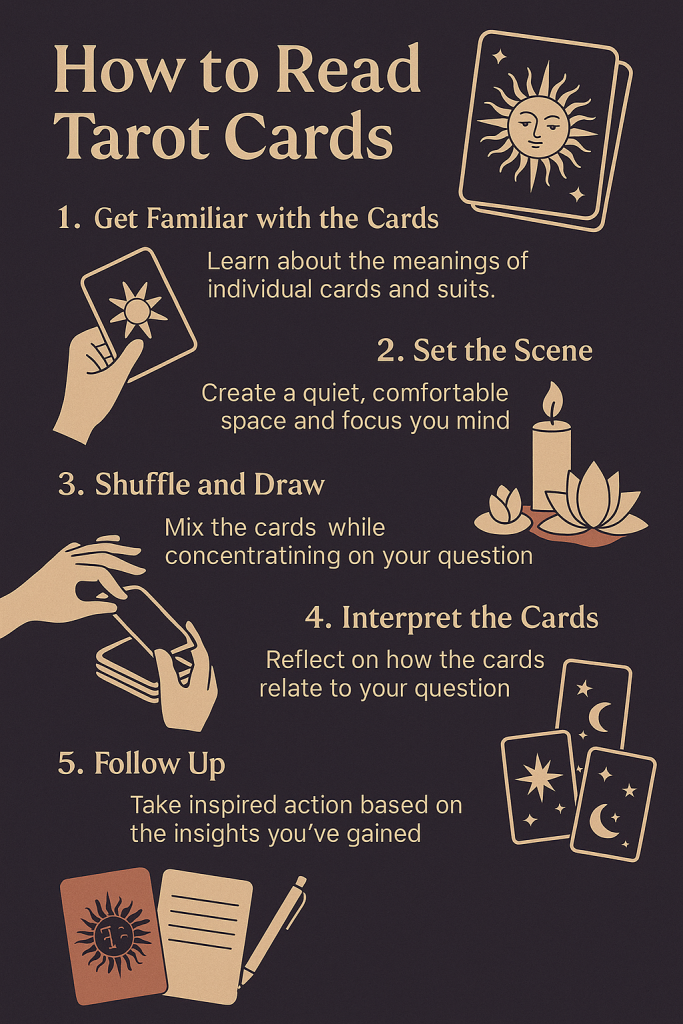
Tarot reading is less about memorizing definitions and more about learning to listen. When psychics read for others, they don’t just pull cards—they merge with the energy behind the question. You can do the same. The key is to stay open, grounded, and curious rather than desperate for an answer.
Step 1: Ground and Breathe
Before you touch your cards, take a moment to breathe deeply. Visualize your thoughts settling like dust in still water. Intuition doesn’t shout; it whispers. The calmer your energy, the clearer the reading.
Grounding connects you to your physical body, which is your intuitive antenna. Try placing your hand over your heart and saying quietly: I am present, I am safe, I am ready to receive guidance.
Professional psychics do this before every session—it resets their frequency so they can read with neutrality instead of emotion.
Step 2: Shuffle with Intention
The shuffle is where the dialogue begins. Each movement mixes your energy into the deck. Focus on your question while shuffling, but don’t overthink it.
You can use any method: overhand shuffle, riffle shuffle, or even spreading the cards across a table and choosing intuitively. What matters is your presence.
A trick many psychics use is to stop shuffling the moment they feel the urge. That tiny internal nudge—like an invisible hand—is intuition signaling it’s time.
You might even feel warmth, tingling, or sudden stillness in your hands. Those sensations are your energy aligning with the message waiting to emerge.
Step 3: Choose Your Spread
The layout of the cards forms your story’s structure. Start simple.
One-Card Pull: Ideal for daily guidance.
Three-Card Spread: Past, present, future—or situation, challenge, advice.
Celtic Cross: A ten-card map that explores multiple energies at once.
Intuitive Spread: Pull cards freely and see how the story unfolds.
In psychic work, spreads act as mirrors for consciousness. Each position opens a new energetic doorway. If you’re just beginning, don’t worry about fancy layouts. Focus on flow instead of structure.
Step 4: Interpret the Story, Not the Symbols
Here’s where most beginners get stuck. They open the guidebook and try to “decode” each card’s meaning word for word. But tarot isn’t a textbook—it’s a narrative.
Look at the images as though you’re entering a dream. What emotion do you feel first? Excitement, sadness, confusion? That emotion is your intuitive key.
Then, notice relationships between cards. Are figures facing each other or turned away? Is light increasing or dimming? Is movement toward or away from the center? The answers are always in the dynamics.
A psychic doesn’t ask, What does this mean? but rather, Why is this showing up now?
Example: pulling the Three of Swords might seem painful. But if it appears next to The Star, it could mean healing after heartbreak, not more suffering. Context transforms interpretation.
If you ever feel stuck, glance at The British Museum’s Tarot Card Archive. Its historical imagery reveals how tarot evolved from storytelling to soul-reading—a reminder that every symbol was born from collective human experience.
Step 5: Feel the Energy Between the Cards
Psychics often describe “reading the space between.” Sometimes, it’s not what appears—but what doesn’t. Notice pauses, repetition, or missing suits. Absence has meaning.
If your spread contains no Cups, emotion might be repressed. If it’s full of Pentacles, practical matters dominate. Your energy communicates in patterns.
Try journaling after each reading. Write what you see, then what you feel. Over time, you’ll notice your intuitive vocabulary expanding—symbols start to “speak” directly.
Step 6: Close the Session Energetically
This step is often forgotten but crucial. Just as you opened your energy to receive, you must also close it to reset.
Hold your deck, thank it, and imagine the energy returning to neutral. You might say aloud: “The message has been received. I release this reading with gratitude.”
Some readers knock gently on their deck to release excess energy or store it in silk cloths between sessions. It’s not superstition—it’s energetic hygiene.
Harvard Health’s findings on emotional regulation confirm that mindfulness rituals restore balance after intense focus (Harvard Health). Grounding after a tarot reading works in the same way—it keeps intuition aligned with stability.
Psychic Reading vs. Self-Reading – The Energetic Difference
Doing your own tarot reading can feel like talking to your higher self through symbols. But there’s one challenge—your own emotions. When you’re deeply invested in the outcome, your energy can distort the message. That’s why even professional psychics often have other readers interpret their cards for them.
Why Psychics Can Read You More Clearly
When a psychic reads for someone else, they approach the energy neutrally. They have no emotional stake in your question, which allows their intuition to flow freely. Their focus is on resonance, not result.
Imagine trying to read a road map while crying or laughing uncontrollably. Emotion blurs direction. Neutrality restores clarity.
Psychics act as energetic mirrors. They tune into your vibration like a radio frequency, translating your subconscious energy into words and images. Because they’re detached from your personal expectations, they see what you might unconsciously ignore.
Scientific American’s research into creative intuition supports this principle, noting that insights arise most clearly during states of relaxed focus, when emotion and logic are balanced (Scientific American).
The Challenge of Self-Reading
When you read for yourself, you’re both the sender and receiver of energy. That’s like trying to listen to an echo while shouting—it creates feedback.
Common biases appear as wishful thinking, overinterpretation, or denial. You might pull The Tower and immediately shuffle again, hoping for something gentler, or convince yourself The Devil means passion instead of unhealthy attachment.
But here’s the truth: tarot doesn’t judge. The cards reflect where your energy is today—not who you are forever. Every challenging card is an invitation to shift alignment.
An example: one reader constantly pulled The Tower during a career slump. Instead of panicking, she paused and asked, “What structure in my life is falling for my highest good?” Within weeks, she quit a draining job and opened her own small business. The card had predicted freedom disguised as chaos.
How to Keep Your Objectivity
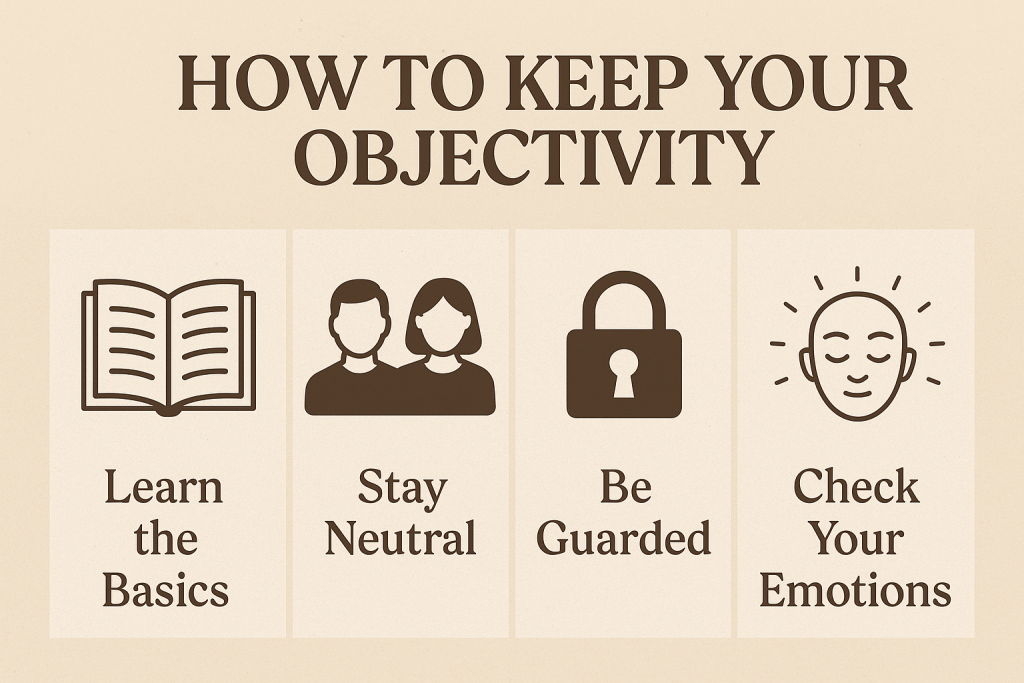
You can absolutely read for yourself successfully—it just takes discipline.
Read when calm, not emotional. Avoid pulling cards when angry, heartbroken, or desperate. Your energy colors the message.
Journal before reading. Write out your feelings, so your energy is expressed instead of projected.
State your intention clearly. Example: I am open to the truth, not just comfort.
Pretend you’re reading for a friend. It helps you step outside emotional bias.
Validate insights later. Record your readings and revisit them after a few days with fresh perspective.
Tarot isn’t meant to confirm what you already think—it’s meant to reveal what you haven’t seen.
When to Consult a Professional Psychic
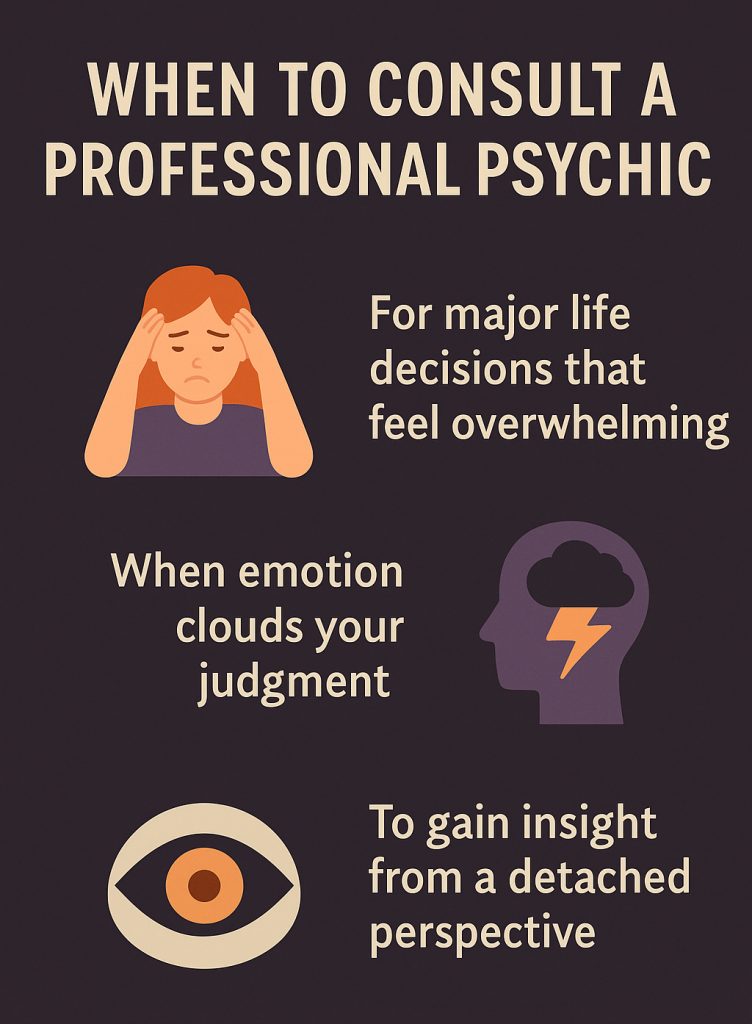
If you’re too close to a situation, a psychic can act as your energetic interpreter. They sense the underlying current your emotions may obscure.
A skilled psychic combines intuitive vision with empathic neutrality. They can hold your energy gently while offering guidance without judgment. That’s why so many people use professional readings during emotional crossroads—sometimes the universe’s message needs an unbiased translator.
But here’s the secret: when you practice tarot for yourself consistently, your own accuracy improves. Over time, you’ll rely less on external validation and more on your intuitive rhythm.
You’re essentially becoming your own psychic—learning to trust your inner guidance just as much as you would trust a reader’s.
Common Mistakes Beginners Make (and How to Fix Them)
Tarot is a conversation with energy—but beginners often try to turn it into a test. They pull multiple spreads in a row, overanalyze every card, or panic when a “negative” card appears. The truth? Tarot only feels confusing when ego tries to control what intuition already knows. Let’s look at the most common mistakes and how to fix them.
Over-Reading the Same Question
This is the tarot version of refreshing your inbox every five minutes. You ask, “Will I hear from them soon?”—and when the answer isn’t what you hoped, you shuffle again. The cards don’t change; your energy does.
Each reading represents a snapshot of your current vibration. If you keep asking the same thing, you’re not giving the energy time to evolve.
Fix it: Ask once, then wait a few days before checking again. Think of your first reading as planting a seed—the soil needs time to shift before you can harvest new insight.
Ignoring Intuition and Overusing the Guidebook
Many beginners think they must memorize every card’s “official” meaning. But tarot isn’t a vocabulary test—it’s intuitive conversation.
If you pull The Hermit and instantly feel peace, that emotional hit matters more than the textbook definition of “solitude.”
The subconscious already speaks in symbols, and your intuition knows how to interpret them before your brain catches up.
Fix it: Look at the card, close your eyes, and describe the feeling it gives you. Then compare it with the guidebook later—it’s often surprisingly aligned.
Reading While Emotional or Drained
Tarot is energy-sensitive. Reading while angry, exhausted, or anxious can blur the signal.
You might interpret a neutral card like The Moon as confusion or fear when it’s actually asking you to trust uncertainty. Your emotional weather affects perception.
Fix it: Check your energy first. If your thoughts are stormy, journal or meditate before pulling cards. As Harvard Health notes, emotional regulation restores clarity and self-trust (Harvard Health).
Forgetting to Close the Session
Tarot connects energy fields—yours, the deck’s, and the collective unconscious. If you forget to close that energetic door, you may carry residual emotions into your day.
Fix it: Always thank your deck, visualize golden light around it, and say, “This session is complete.” That affirmation resets energy.
Psychics call this “energetic hygiene,” and it’s as essential as washing your hands after painting.
Taking Every Card Literally
Tarot communicates through metaphor. Pulling Death doesn’t mean physical death—it means transformation, release, or rebirth. Likewise, The Devil can symbolize temptation or empowerment depending on context.
Fix it: Focus on patterns and emotion, not fear. Every challenging card is a growth portal, not a punishment.
An example: one reader pulled Death before leaving her corporate job. Weeks later, she said, “It wasn’t death—it was liberation.”
Expecting Tarot to Do the Work
Tarot reveals possibilities, not guarantees. The cards can show where opportunity flows, but only you can act on it.
As one psychic on PsychicOz put it, “Tarot doesn’t make magic—it points where magic wants to happen.”
Fix it: After each reading, write one small, practical step you can take to embody the advice. That bridges spiritual insight with grounded action.
The Modern Evolution of Tarot
Tarot has come a long way from candlelit parlors and velvet tablecloths. Once seen as a mystical tool for fortune-telling, it’s now being embraced by therapists, entrepreneurs, and creatives as a framework for intuition, mindfulness, and emotional clarity. What was once fringe spirituality is now a mainstream method for self-reflection.
Tarot Enters the Modern World
You can find tarot on wellness blogs, executive retreats, and TikTok live streams. Corporate leaders use cards for decision clarity, therapists integrate them into shadow work, and artists draw inspiration from their imagery.
A Forbes article notes that tarot is increasingly being used in therapy as a way to “externalize inner thoughts” and visualize personal challenges. In other words, the cards give shape to what words can’t.
Psychics have always known this—tarot is not about guessing outcomes but about revealing alignment. The cards are mirrors, not prophecies.
In a world of data and logic, tarot reminds people of intuition, creativity, and symbolism—the other side of intelligence.
Tarot in Digital Spaces
Tarot has also gone digital. Apps and AI readings may seem impersonal, but they’ve opened new doors for accessibility and learning. Platforms like Insight Timer and Labyrinthos offer virtual decks that teach symbolism interactively, helping beginners find comfort before investing in a physical deck.
Still, professional psychics note that technology should enhance, not replace, energy connection. Nothing replicates the physical sensation of shuffling cards infused with your energy.
One psychic reader on PsychicOz.com said, “Tarot apps are training wheels. Real readings happen when you touch the deck—your energy completes the circuit.”
The Rise of Social Media Tarot
On TikTok and Instagram, tarot has found a new generation. Hashtags like #TarotTok and #DailyTarot pull millions of views. These quick one-card readings and pick-a-card videos often go viral not because they predict specifics, but because they validate emotions.
A young reader once explained, “I’m not predicting your breakup; I’m describing your frequency.” That shift—from prediction to energy awareness—is what separates intuitive tarot from entertainment tarot.
Of course, discernment is key. Not every social media reading applies to you. Use intuition to feel what resonates. Real psychic connection feels grounding, not addictive.
Tarot as a Tool for Creativity and Emotional Healing
Modern psychology is catching up to what mystics have said for centuries: symbolism heals.
Studies from Frontiers in Psychology show that imagery-based reflection enhances emotional awareness and creative problem-solving (Frontiers in Psychology).
That’s why more coaches, writers, and therapists now use tarot to unlock perspective shifts.
For example, one creative coach described pulling The Star during a writing block. Instead of seeing it as “hope,” she saw it as “permission to pause and dream.” The card broke her perfectionist loop—and her novel flowed again.
Tarot is not superstition; it’s structured intuition.
Tarot’s True Modern Role
Today, tarot is less about fortune-telling and more about energetic storytelling. It bridges intuition and insight, combining the mystery of the psychic with the clarity of self-reflection.
A modern tarot reader is part mystic, part counselor, and part energy translator. They don’t just interpret cards—they read people, patterns, and emotions.
As one astrologer said, “Tarot is where spirituality meets emotional intelligence.”
How to Read for Yourself Without Bias
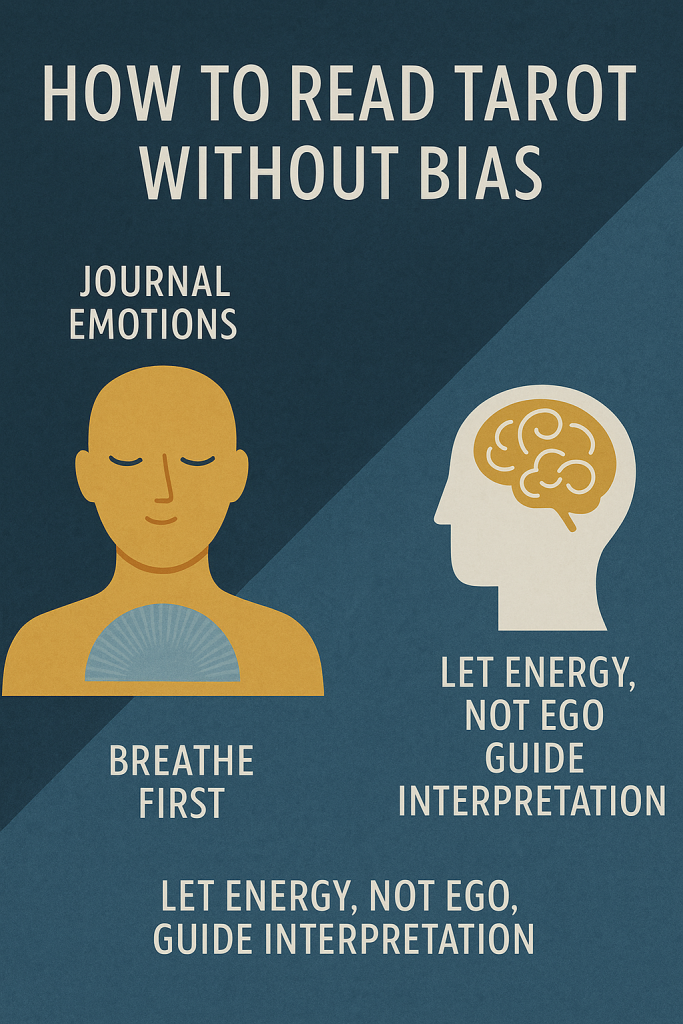
Reading for yourself can be both powerful and tricky. You’re deeply connected to your own emotions—which means your intuition can be incredibly accurate, or completely clouded by what you want to see. The secret to self-reading is emotional neutrality. When you learn to interpret the cards as an observer instead of a participant, your intuition becomes razor sharp.
The Mirror Technique
One of the best tricks psychics use is called “the mirror technique.” Before laying out your cards, imagine that you’re reading for someone else with your exact question. This mental distance reduces emotional interference and helps your intuition translate energy rather than emotion.
If you’re asking, “Will I get this promotion?” try rephrasing as, “What can this person do to step confidently into success?” The subtle shift reframes desperation into curiosity—an energy the cards respond to far more clearly.
Tarot mirrors your vibration. When you’re anxious, it mirrors chaos. When you’re calm, it mirrors clarity.
Journal Before You Read
Psychics and intuitive coaches often recommend journaling before a self-reading. Writing your thoughts down helps release mental clutter so that intuition has space to breathe.
Take a few minutes to pour your raw feelings onto paper—no censoring, no analysis. Once you’ve emptied your emotional cup, shuffle the cards. The difference in clarity will shock you.
Psychology supports this practice too. Journaling has been shown to lower stress, increase focus, and enhance cognitive integration—all key for interpreting symbols accurately (Harvard Health).
Ask, Don’t Demand
Demand energy (“Tell me NOW!”) blocks intuitive flow. Tarot works best with cooperative curiosity. Ask gentle, expansive questions like:
“What energy is guiding me right now?”
“How can I align with the outcome I desire?”
“What lesson am I being asked to learn through this situation?”
The more open your question, the more nuanced the message.
Use Supporting Systems
Astrology, numerology, and even dream symbols can complement your tarot insights. For instance:
If you pull The Empress and your numerology number is “3,” both align with creativity and nurturing.
If your Moon sign is in Pisces and you pull The Moon card, it might emphasize emotional awareness rather than confusion.
Using multiple systems creates triangulation—psychic cross-verification of energy.
Give the Message Time to Unfold
A tarot reading is rarely meant to be understood instantly. Often, meaning deepens with time. What feels cryptic today might make perfect sense in a week, once life aligns with the message.
A psychic once said, “Tarot gives you tomorrow’s wisdom today—it just takes you a few days to catch up.”
To stay objective, revisit your journal after a few days. Highlight patterns, note which readings proved accurate, and which ones mirrored your mindset at the time. You’ll quickly spot how your energy shapes outcomes.
When to Step Away
If you find yourself reading compulsively—asking the same question repeatedly—it’s a sign to pause. Tarot should feel empowering, not obsessive. If the cards start to feel “noisy,” clear your deck, meditate, and wait until you feel balanced again.
Tarot is like a wise friend. It won’t shout over you—it waits until you’re ready to listen.
Energy Hygiene After Your Reading
Tarot is more than a mental exercise—it’s energetic dialogue. When you open a session, you invite energy to flow through you, your cards, and your space. That’s why professional psychics treat energetic hygiene with the same respect that doctors give to sterilization—it keeps your intuitive channel clean, balanced, and safe.
Why Cleansing Matters
Every reading, whether for yourself or others, leaves behind energetic residue. Think of it like emotional static. If you don’t clear it, your next reading may “echo” the previous one, blending messages and confusing outcomes.
Psychics describe this as energetic overlap—when one session’s emotional imprint lingers into the next. That’s why cleansing is not superstition; it’s maintenance.
Harvard Health notes that intentional mindfulness practices—like cleansing rituals—reset the nervous system and restore calm focus (Harvard Health). Energetically, the same principle applies: when you clear your tools and space, you return your intuition to its neutral baseline.
Cleansing Methods for Your Deck
Choose whichever method feels natural. Energy responds more to intent than technique.
1. Smoke Cleansing:
Burn sage, palo santo, or incense and gently waft the smoke over your deck. As the smoke moves, visualize old energy lifting away.
2. Sound Cleansing:
Use a singing bowl, bell, or even your voice. Sound vibrations break up stagnant energy. Many psychics hum a tone over their cards to “tune” the frequency.
3. Salt and Moonlight:
Salt absorbs heavy energy. Place your deck near a small bowl of sea salt or leave it under moonlight overnight, especially during a Full Moon.
4. Visualization:
Hold your deck, breathe deeply, and imagine golden light streaming through each card. The moment you feel a sense of peace, your deck is clear.
Regrounding Yourself
After reading, you might feel light-headed, emotional, or “psychically full.” That’s normal—you’ve been in a receptive state. Bring your awareness back into your body:
Eat something grounding (dark chocolate, nuts, bread).
Wash your hands in cool water while saying, “I release all energies that are not mine.”
Step outside, touch a tree, or take a few slow breaths.
Grounding resets your intuitive boundary so you don’t absorb other energies unconsciously.
Closing the Session
Just as you opened the reading with intention, you must also close it consciously. Hold your deck and say something like:
“The message has been received. I now release all energies and return to peace.”
Psychics often describe this as “sealing the channel.” It prevents emotional carryover and keeps your spiritual boundaries intact.
One tarot teacher compared it to ending a phone call: “When you hang up with Spirit, don’t leave the line open—you’ll only get static.”
Cleansing Your Space
If you read regularly, cleanse your reading area weekly. Open windows, let sunlight in, and add fresh flowers or a crystal grid. Even scent can shift energy—lavender for peace, sandalwood for grounding, citrus for renewal.
Energy is like air—it moves better when the environment is fresh.
Storing Your Deck
There’s no strict rule about where to keep your deck, but intention matters. Some wrap their cards in silk to preserve energy purity; others leave them on an altar or shelf with crystals. Choose what feels intuitively right.
Many psychics say decks stored openly near natural elements—plants, stones, or candles—stay more “alive.”
Your deck is not just paper and ink—it’s a living extension of your energy field. Treat it with the same reverence you’d offer a sacred text or trusted friend.
The Psychic View – Why Tarot Is a Conversation with Spirit
When most people think of tarot, they imagine fortune-telling—cards predicting events like a movie script. But psychics see it differently. Tarot is not a forecast; it’s a conversation with Spirit, a channel between your consciousness and the universal field of intelligence that surrounds all things.
Energy Speaks in Symbols
Spirit rarely communicates in full sentences. It speaks in intuition, symbols, and synchronicity—the same language tarot uses. When you draw a card, your higher self and Spirit collaborate to deliver a message your rational mind can translate.
A psychic doesn’t “control” this process—they listen. They tune into the vibration beneath the cards, sensing shifts in temperature, emotion, or imagery that go beyond printed meaning.
This is what psychics call reading the energy between the cards. Sometimes, it’s not about what’s visible, but what’s missing. A spread without Major Arcana might signal that daily choices, not destiny, are shaping events. A layout full of Cups might indicate deep emotional flow or healing energy.
The Cards as Mirrors of Divine Timing
Spirit communicates in perfect timing. Have you ever noticed that certain cards keep showing up over and over? That’s not coincidence—it’s synchronicity. The universe is mirroring your frequency back to you until you truly integrate the message.
Carl Jung, who coined the term synchronicity, described it as “meaningful coincidence”—a bridge between the physical and spiritual worlds (Verywell Mind). Tarot embodies that bridge perfectly.
One psychic told a story of a client who repeatedly pulled The Hanged Man during a difficult breakup. At first, she found it frustrating—it symbolized surrender. But months later, she admitted, “That card wasn’t punishing me—it was waiting for me to stop fighting life.” When she finally let go, everything fell into place.
That’s how Spirit works—it doesn’t rush you; it reflects you.
How Psychic Readers Channel Through Tarot
Psychics use tarot as an anchor for intuitive focus. The cards act as a visual doorway—an energetic stabilizer that allows impressions, sensations, or clairvoyant visions to flow safely.
While a skeptic might say, “You’re projecting meaning,” a psychic would reply, “Meaning is the language of energy.”
Psychic readers often describe feeling sudden waves of emotion, seeing mental images, or hearing inner guidance as they interpret a card. For example:
Pulling The Moon might evoke a fleeting vision of a mother or ancestral presence.
The Sun might fill the room with warmth and optimism.
The Devil could trigger sensations of tension, alerting the reader to emotional entanglement.
Spirit uses your body as a receiver. Your emotions, sensations, and imagery are divine feedback mechanisms.
Reading Without Fear
Psychic tarot reading isn’t about power—it’s about partnership. Spirit doesn’t speak in riddles to confuse you; it speaks in symbols to empower you.
Fear often blocks intuition. That’s why experienced readers focus on love, curiosity, and neutrality. Spirit’s frequency is subtle—it matches peace, not panic.
If a card feels intimidating, pause and ask: What is this card trying to teach me, not warn me about? Every image in tarot carries both shadow and light, just as every human does.
The Space Between the Words
A seasoned psychic once said, “Spirit speaks loudest in silence.” Sometimes, what isn’t said in a reading is more important than what is. If you draw only a few cards and feel an intuitive stillness, don’t force interpretation. Let the message unfold in your daily life.
This mirrors the creative process that Scientific American describes—insight often appears in moments of rest rather than effort (Scientific American). Spirit works the same way: when you relax into openness, intuition rushes in.
Tarot is your conversation with the cosmos, but Spirit always gives you the final word. It can guide, nudge, or clarify—but it never overrides free will.
The Psychic’s Role as Translator
Psychics don’t predict what Spirit will do—they translate what Spirit is already whispering. A great reader doesn’t say, “This is what’s going to happen,” but rather, “This is the energy unfolding—and here’s how you can align with it.”
That shift from prediction to empowerment is what makes tarot sacred. It restores your sovereignty while deepening your spiritual awareness.
In that sense, tarot is not magic—it’s the art of remembering that you are.
Trusting Your Own Intuition
No matter how many tarot spreads you master, the most important skill you’ll ever develop is trust—trust in your inner voice, your instincts, and your ability to receive guidance from something greater than logic.
Your Intuition Is Already Working
People often say, “I wish I were intuitive,” not realizing they already are. Intuition is a natural human sense—just like sight or touch—but it gets buried under doubt, distraction, and the noise of modern life.
You’ve already experienced it countless times:
Thinking of someone right before they text you
Feeling uneasy before walking into a situation that turned chaotic
Sensing someone’s mood before they speak
Those aren’t coincidences. They’re moments when your energy field picked up information before your conscious mind caught up. Harvard Health describes intuition as part of the brain’s rapid emotional intelligence system—processing data faster than logic can interpret it (Harvard Health).
Tarot simply gives that inner knowing a language.
The Difference Between Intuition and Imagination
One of the hardest parts of reading for yourself is knowing if the voice you’re hearing is intuition or imagination. Here’s the key:
Intuition feels calm, clear, and immediate.
Imagination feels forced, uncertain, or repetitive.
Intuition lands like a soft certainty—it doesn’t argue or justify itself. If a thought feels peaceful yet powerful, that’s intuition. If it feels anxious or demanding, that’s fear pretending to help.
Psychics call this “energetic texture.” You can learn to recognize it over time, like identifying a friend’s voice in a crowded room.
Building a Relationship with Your Inner Voice
Your intuition is like a friend—you need to spend time with it to build trust. The more you listen, the more it speaks.
Try this: every morning, pull one card and write down your first gut feeling before you check any guidebook. Then note how that insight shows up during your day. You’ll start noticing your accuracy improving week by week.
Tarot becomes a training ground for intuition—each card a mirror for how you process energetic information.
When Doubt Creeps In
Even professional psychics experience doubt. The key isn’t to eliminate it but to reframe it. Doubt means your rational mind is catching up to your intuition—it’s a sign of integration, not failure.
If your readings feel cloudy, step back. Breathe. Reground. Sometimes Spirit speaks softly because it wants you to listen differently—through synchronicities, music, or dreams instead of cards.
As Frontiers in Psychology research shows, creativity and intuition thrive when the mind rests and emotional regulation is high (Frontiers in Psychology). Giving yourself rest is part of psychic hygiene.
Celebrate Small Wins
Each time your intuition proves correct, celebrate it. Validation rewires the brain to recognize intuitive accuracy as safety instead of risk. Over time, you’ll stop second-guessing and start trusting.
One psychic I met said, “Every time I honor my intuition, the universe raises its volume.” That’s how it works—Spirit speaks louder when it’s heard.
Letting Intuition Lead Beyond the Cards
Eventually, tarot becomes secondary. The real goal isn’t to rely on the deck—it’s to become it. When you learn to trust your intuitive rhythm, life itself starts speaking in symbols. The right opportunities, people, and signs appear like cards being laid out in real time.
Your intuition is your built-in GPS—it doesn’t predict every turn, but it keeps you aligned with the road that’s meant for you.
The Mantra of the Intuitive Reader
“My intuition is not guessing. It is remembering.”
That’s the essence of psychic growth: remembering your connection to something bigger than thought, and realizing that your inner knowing was never lost—only quieted.
Conclusion – You Are the Tarot
At its core, tarot isn’t a deck of cards—it’s a reflection of consciousness itself. The Fool’s Journey through the 78 cards mirrors the human experience: innocence, challenge, growth, and transcendence. Each time you shuffle, you’re engaging in a living meditation on your soul’s evolution.
Tarot doesn’t predict your destiny—it reveals your participation in creating it. Every draw is a conversation with the universe saying, “Here’s where your energy is focused—what do you want to do with it?”
The cards become sacred mirrors. The Lovers asks how you align with your values. The Tower challenges you to release what isn’t authentic. The Star reminds you that hope isn’t naïve—it’s magnetic.
Psychics see tarot as a co-creative dialogue, not a hierarchy. Spirit isn’t some distant entity pulling strings; it’s an energetic current moving through you, your cards, and your consciousness.
As Verywell Mind explains, archetypes represent universal human patterns—blueprints for experience. When you read tarot, you’re accessing those collective patterns directly, participating in an ancient psychological and spiritual conversation that spans centuries.
And this is where intuition, psychology, and spirituality finally meet. Modern science may describe it as subconscious pattern recognition; psychics call it divine dialogue. In truth, they’re describing the same mystery through different languages.
A seasoned tarot reader once said, “The cards don’t answer—they awaken.” That awakening is the real reading: the shift in perception that allows you to see your life as sacred narrative, not random chaos.
When you read tarot for yourself, you’re practicing spiritual literacy. You’re learning to interpret life’s metaphors, recognize synchronicities, and trust the whispers of your higher self.
You are both the reader and the deck. You are the question and the answer. Tarot is simply the bridge reminding you that everything you seek already lives within you.
Your intuition is the ink. Your awareness is the spread. Your choices are the cards you play.
So when you draw your next card, don’t ask, “What does this mean?” Ask instead, “What is my soul showing me through this?” Because in truth—
you are the tarot.
FAQ: Doing Your Own Tarot Card Reading
How does tarot actually work?
Tarot works through energy resonance. The cards act as symbolic mirrors, reflecting your subconscious patterns and intuitive insights.Can anyone read tarot, or do you need psychic ability?
Anyone can learn tarot. Psychic intuition helps, but practice and self-awareness are what make readings accurate.How do I cleanse my tarot deck before use?
You can cleanse your deck with incense, sound, moonlight, or simple intention. The goal is to neutralize lingering energy.What’s the best time to do a tarot reading?
When your mind is calm and your environment feels peaceful. Avoid reading when you’re tired, angry, or emotional.How do I know if my intuition or fear is speaking?
Intuition feels calm and certain. Fear feels urgent and repetitive. Tarot helps you train your awareness to recognize the difference.How often should I read tarot for myself?
As often as you can stay objective. Daily one-card pulls are fine; full spreads should be spaced out to allow energy shifts.Can tarot predict the future?
Not exactly. Tarot reveals energetic probabilities and emotional undercurrents—it shows what’s likely, not what’s fixed.What does it mean if I pull the same card repeatedly?
It means that message is still active in your energy field. Spirit repeats lessons until you integrate their wisdom.Do reversed cards matter?
Only if you feel they add depth. Some readers use them for contrast; others read upright only. Follow your intuition.Should I let others touch my tarot deck?
That’s a personal choice. Some readers allow it to connect energy; others keep their deck private for energetic purity.What’s the difference between tarot and oracle cards?
Tarot follows a 78-card structure with Major and Minor Arcana, while oracle cards are freeform and theme-based.What if I get a “negative” card like Death or The Tower?
Don’t panic. These cards symbolize transformation, not tragedy. They often bring breakthroughs disguised as endings.Can I still read tarot if I’m skeptical?
Yes. Tarot doesn’t require belief—it responds to intention. Skeptics often find it useful for self-reflection.How should I store my tarot cards?
Wrap them in cloth, keep them in a box, or place them on an altar. Store them where they feel energetically safe.What are archetypes in tarot?
They are universal human symbols—like The Fool or The Lovers—that mirror emotional and spiritual experiences.Can tarot readings conflict with religion?
Tarot is a spiritual language, not a religion. It complements most faiths by fostering self-understanding.How do I avoid bias when reading for myself?
Pretend you’re reading for a friend. Emotional distance enhances objectivity and improves accuracy.Can tarot help with anxiety or decision-making?
Yes. It helps externalize your thoughts and emotions, creating space for clarity and grounded choices.Why do my readings change every time?
Because energy shifts daily. Tarot reflects your vibration in the moment, not a static destiny.Can tarot be used in therapy?
Yes. Many therapists use tarot symbolically for introspection and mindfulness (Forbes).How long does it take to learn tarot?
You can start interpreting cards intuitively right away. True mastery grows over time through practice and journaling.Should I read for others before mastering self-readings?
No rush. Start with yourself to understand your own energy first. Confidence develops naturally.Why do psychics still use tarot if they’re intuitive?
Tarot grounds intuitive impressions into symbolic form, making the reading easier to interpret and confirm.What are “tarot spreads”?
Spreads are card layouts that organize messages—like three-card spreads for past, present, future.Can I do tarot readings online or via video call?
Yes. Energy isn’t limited by distance; intention bridges the connection.Do I need crystals or candles for a tarot session?
Not required, but they can enhance focus and raise your vibration.How do I interpret multiple cards at once?
Read the story, not individual meanings. Notice patterns, colors, and emotional flow between cards.How can I ground myself after a reading?
Eat something grounding, step outside, or visualize roots connecting to the earth.Can tarot help develop psychic skills?
Absolutely. Tarot sharpens intuitive perception by teaching symbolic interpretation and energy awareness.What’s the most important tarot rule?
Trust your intuition above all else—the cards are only as wise as the person reading them.

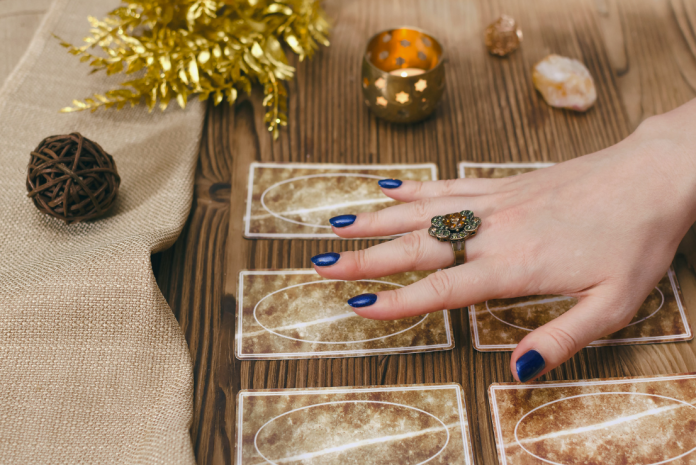
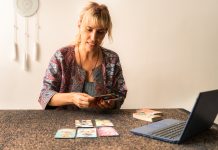

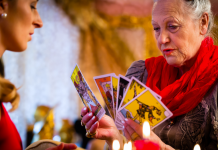
This article is a treasure trove of practical advice for beginners in tarot reading! The detailed explanations on cleansing the space, choosing spreads, and interpreting cards are incredibly helpful. It emphasizes the importance of intuition and provides a balanced view on how to handle the complexities of reversed cards. A wonderful guide for anyone looking to deepen their understanding of tarot!
I appreciate the detailed instructions on how to clear your space and shuffle the deck. The explanations about different spreads, especially the three-card and Celtic Cross spread, offer a clear path for beginners to start their tarot journey.
The article provides a comprehensive guide for beginners interested in tarot card readings. It emphasizes the importance of cleansing your space and suggests various methods to do so. The breakdown of different card spreads is particularly useful for someone new to tarot.
The article provides a thorough and insightful guide for beginners who are interested in learning tarot card reading. It covers essential aspects such as cleansing your space, choosing and shuffling a deck, and selecting different types of spreads. What stands out to me is the emphasis on intuition and acceptance of the answers provided by the cards. For beginners, the recommendation to start with simpler spreads like a three or five-card spread is practical and will likely lead to better understanding and interpretation of the cards. Additionally, the advice to avoid asking the same questions repeatedly is crucial for maintaining the integrity and clarity of the readings. Overall, this is an excellent resource for anyone looking to get started with tarot reading.
The article is thorough in explaining how to set up for a tarot reading and the importance of clearing the space from negative energy. The detailed descriptions of the various spreads and their purposes provide a solid foundation for beginners.
It’s helpful that the article stresses not to repeatedly ask the same questions, as this could lead to confusion. The sections on different spreads like the three-card and 12-card readings offer a structured approach for novices.
While the article provides a basic introduction for beginners to get started with tarot readings, it tends to oversimplify the complexities involved. For instance, the article suggests cleansing spaces with crystals and herbs without providing the necessary context of why these elements are effective. It is essential to understand the historical and cultural significance behind these practices to use them effectively. Moreover, the article downplays the difficulties beginners might face when interpreting the symbolism and nuances of the cards, including reversed cards, which can drastically alter a reading’s meaning. Without in-depth study, relying solely on intuition might lead to misinterpretation. Beginners should consider consulting comprehensive guides or even seeking mentorship from experienced practitioners to avoid superficial readings.
The emphasis on using your intuition resonates well with the essence of tarot reading. The guidance on interpreting reversed cards is practical advice for beginners who might find this aspect challenging.